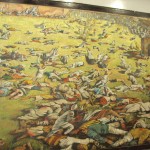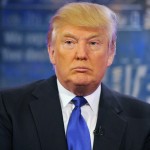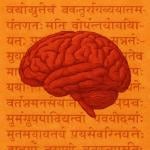This is a lesser known meeting and headway that Bush’s visit made possible. All the headlines have been hogged by the Nuke deal but the commercial stuff is also very important.
Overshadowed in the discussion over a nuclear agreement between the United States and India is a different sort of pact – the one between corporate leaders of the two countries.
Chief executives of 5 American corporations and 10 Indian companies presented a report to President Bush and Prime Minister Manmohan Singh on Thursday morning in New Delhi on ways to improve investment and commercial links.
As the president and prime minister shared the end of a long table – Indian executives on one side; Americans, including Secretary of State Condoleezza Rice, on the other – the discussion ranged over trade concerns: a need to dismantle Indian commercial barriers, the development of basic infrastructure, a strengthening of intellectual property rights and the building of special economic zones to foster joint ventures with American companies.
India is becoming a strong base for software development and the outsourcing of services and manufacturing. But the executives concluded in their report that greater United States investment could help the further development of India’s infrastructure, and more American technical expertise could help upgrade its low-cost manufacturing.
Nandan M. Nilekani, chief executive of Infosys Technologies, one of India’s largest outsourcing companies, who participated Thursday, said, “The C.E.O. Forum was an initiative suggested by President Bush and an acknowledgment that Indian and U.S. businesses are catalysts for a close relationship between the two countries.” He was joined in the discussion by, among others, Ratan Tata and Mukesh Ambani, the heads of the Tata and Reliance industrial conglomerates.
In October, when Cisco Systems said it would invest $1.16 billion in India, tripling its work force here, companies like Intel and Microsoft swiftly followed with commitments of their own.
John Chambers, the chief executive of Cisco, the world’s largest computer networking manufacturer, has said that India has the potential to become its biggest market in Asia in five years.
With 8.1 percent growth expected this fiscal year, India’s thriving economy is lifting millions from poverty and Western companies have been quick in trying to pry open the market. More than 600 million Indians of a population around 1.1 billion are under 25, and half of those under 15.
“Their rapidly growing buying power presents a massive market for American goods and services,” Ron Somers, president of the United States-India Business Council, based in Washington. By some accounts, the two countries are on track to double trade, to $50 billion, in the next three years.
For many companies like Cisco, India’s potential as a market began only in the last couple of years. But with Indian businesses expanding rapidly, the need for technology has grown. Cisco’s revenue in India surged by more than 50 percent in two years.
For Cisco, India’s highly qualified labor pool makes it an important research base, as well as a center for software development and back-office services. Ranganath Salgame, president of Cisco Systems India, said the country’s economy “is not a one- or two-year blip in the growth cycle like some other emerging markets.” Instead, he said, India has changed.
“From a promise waiting to happen,” Mr. Salgame said, “India is finally happening.”











